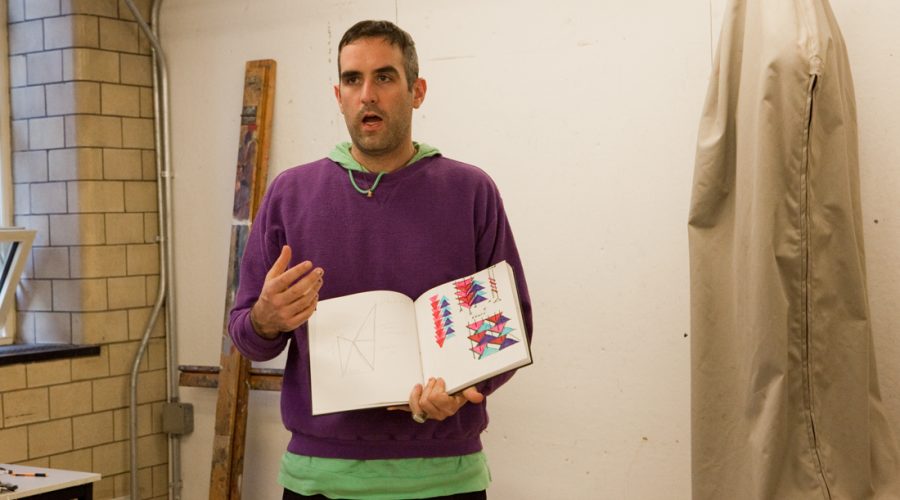
Rhode Island School of Design Partners with the U.S. Department of State’s Office of ART in Embassies Visiting artist Jim Drain (RISD BFA 98/Sculpture) is leading Art in Embassies: Morocco, a Wintersession 2012 studio course at Rhode Island School of Design (RISD), as the first phase of a multiyear partnership between RISD and the U.S. Department of State’s Office of ART in Embassies (AIE), made possible through the generous support of RISD alumna and Board Vice Chair Lisa Pevaroff, RISD BFA 83/Textile Design.
Rhode Island School of Design Partners with the U.S. Department of State’s Office of ART in Embassies Visiting artist Jim Drain (RISD BFA 98/Sculpture) is leading Art in Embassies: Morocco, a Wintersession 2012 studio course at Rhode Island School of Design (RISD), as the first phase of a multiyear partnership between RISD and the U.S. Department of State’s Office of ART in Embassies (AIE), made possible through the generous support of RISD alumna and Board Vice Chair Lisa Pevaroff, RISD BFA 83/Textile Design.
This collaborative project has been designed to promote cross-cultural exchange, and to recognize and nurture the talents of the next generation of professional artists. Ultimately, the collaboration will yield a large-scale outdoor work of art for the U.S. Embassy building currently in the design phase for Rabat, Morocco. Drain is leading RISD students in the exploration and research of the rich culture in Morocco, examining the deeper meaning and significance behind the surface and visual culture. The class has also taken a close look at AIE’s mission and objectives; at the architectural design for this particular embassy so that the site-specific piece truly fits within the unique plans for the structure; and will work with visiting textile artist, Soukaina Aziz El Idrissi from Morocco. Dean of Fine Arts Anais Missakian, a professor of Textiles, and Interim Associate Provost Patricia Phillips, a professor in Graduate Studies, are also involved in the process.
“We are approaching this installation not from specific disciplines, but rather from a materials and cultural approach. The crossover between disciplines is valuable, as each student brings a specific interest and expertise to the ideation process,” notes Drain. “In this course I am working with the class on something with real consequence, and we have an incredible opportunity to have real input into the nuts and bolts of the work itself. It is a challenging way to do a commission, but one that I find very thrilling. Together, we are focusing on how to incorporate materials in new and unorthodox ways, building models, researching and discussing issues relating to cultural diplomacy.” To read the full article, please visit the url: http://www.marketwatch.com/story/rhode-island-school-of-design-partners-with-the-us-department-of-states-office-of-art-in-embassies-2012-01-30.

